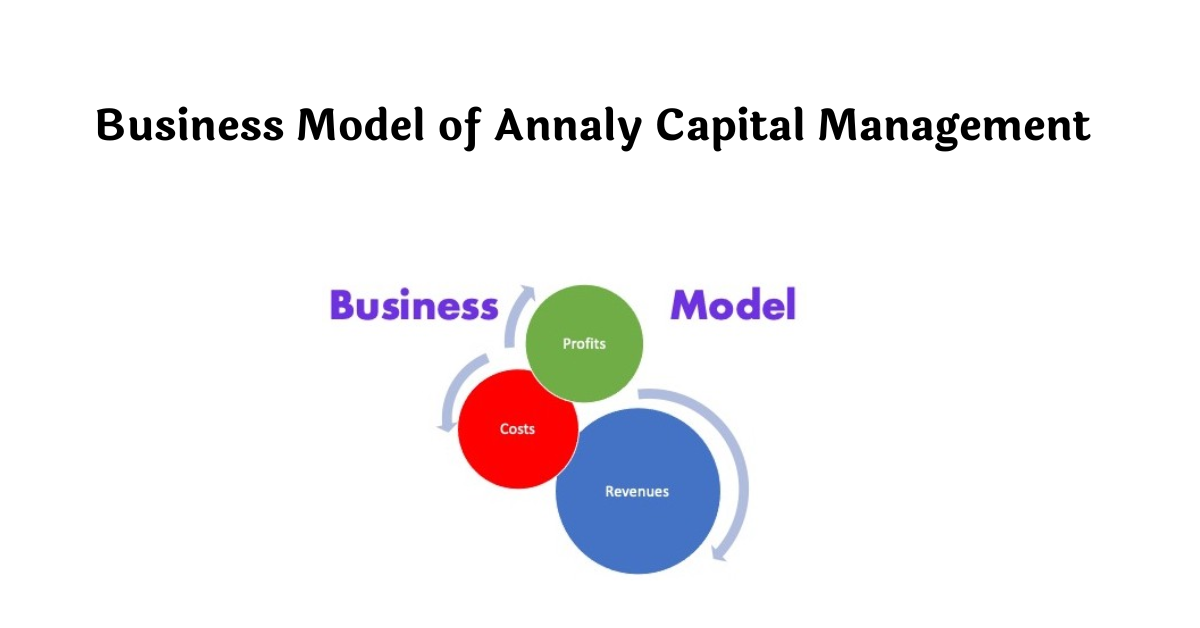In the world of finance and investment, Annaly Capital Management has carved out a prominent niche for itself. With its focus on mortgage-backed securities and a unique business model, Annaly has attracted attention from investors, analysts, and financial experts alike. In this comprehensive exploration, we will delve into the intricacies of Annaly Capital Management’s business model, shedding light on its operations, strategies, and impact on the financial market.
Understanding Annaly Capital Management
Annaly Capital Management: A Brief Overview
Annaly Capital Management, often simply referred to as Annaly, is a real estate investment trust (REIT) with a distinct business model centered around mortgage-backed securities (MBS). Established in 1997, Annaly has grown into a significant player in the financial sector. It primarily focuses on investing in MBS and generating income through interest rate spreads.
The REIT Structure
One critical aspect of Annaly’s business model is its REIT status. As a REIT, Annaly is required by law to distribute at least 90% of its taxable income to shareholders in the form of dividends. This structure not only offers tax advantages but also aligns the company’s interests with those of its shareholders.
Annaly’s Core Business Model
Investment in Mortgage-Backed Securities (MBS)
Annaly’s primary business revolves around MBS. These securities are essentially pools of mortgages bundled together and sold to investors. Annaly acquires MBS issued by government-sponsored enterprises (GSEs) such as Fannie Mae and Freddie Mac, as well as private issuers. These securities provide Annaly with a stream of cash flows generated by the underlying mortgage payments.
The Yield Spread
One of the key components of Annaly’s business model is the yield spread. This spread is the difference between the interest income earned from the MBS portfolio and the cost of financing those investments, which includes borrowing costs. Annaly profits from this spread, making it a crucial element of its revenue generation.
Interest Rate Risk Management
The success of Annaly’s business model is heavily influenced by its ability to manage interest rate risk effectively. Since MBS are sensitive to interest rate fluctuations, Annaly employs hedging strategies to protect its portfolio from adverse rate movements. These strategies involve using derivative instruments like interest rate swaps to mitigate risk.
Best Digital Marketing Agency in Noida
The Role of Leverage
Leverage plays a significant role in Annaly’s business model. The company typically borrows money at short-term rates and invests in longer-term MBS with higher yields. This interest rate arbitrage is a key driver of the yield spread and, consequently, Annaly’s profitability.
Annaly’s Revenue Streams
Interest Income
The primary source of revenue for Annaly is the interest income generated from its MBS portfolio. The company earns money from the interest payments made by homeowners on the underlying mortgages in the MBS pool.
Gain (Loss) on Sale of Investments
Annaly may also realize gains or losses when it sells MBS from its portfolio. These gains or losses can fluctuate based on market conditions and the interest rate environment.
Net Interest Income
Net interest income is a crucial metric for Annaly. It represents the difference between the interest income earned from its investments and the interest expense paid on its borrowings. A positive net interest income is a sign of a healthy business model.
Annaly’s Investment Strategies
Agency vs. Non-Agency MBS
Annaly differentiates between agency and non-agency MBS in its investment strategy. Agency MBS are guaranteed by government-sponsored entities like Fannie Mae and Freddie Mac, offering a higher level of safety but typically lower yields. Non-agency MBS, on the other hand, carry more credit risk but potentially higher returns.
Hybrid MBS
Annaly also invests in hybrid MBS, which combine features of both agency and non-agency securities. These securities offer a middle-ground risk-return profile.
Adjustable-Rate vs. Fixed-Rate MBS
Another aspect of Annaly’s strategy is the allocation between adjustable-rate and fixed-rate MBS. Adjustable-rate MBS are more sensitive to interest rate fluctuations and can offer higher yields when interest rates are stable.
Risk Management and Challenges
Interest Rate Risk
One of the most significant challenges Annaly faces is interest rate risk. When interest rates rise, the value of existing MBS with fixed interest rates may decline. Annaly’s hedging strategies are designed to mitigate this risk, but it remains an ongoing concern.
Credit Risk
Investing in non-agency MBS exposes Annaly to credit risk. The creditworthiness of borrowers in these securities can affect the performance of the portfolio.
Liquidity Risk
Annaly’s business model relies on the ability to access short-term financing markets. Liquidity risk arises when market conditions make it difficult or costly to roll over existing debt or secure new financing.
Regulatory Environment
Annaly’s business model is subject to a complex regulatory framework, particularly as a REIT. Compliance with REIT regulations is essential to maintain the tax advantages associated with this structure.
The Impact of Economic Conditions
Annaly’s business model is sensitive to economic conditions, interest rates, and the overall health of the real estate market. Economic downturns, such as the 2008 financial crisis, can have a significant impact on the performance of MBS and, consequently, Annaly’s profitability.
Annaly’s Performance and Shareholder Returns
Dividends
As a REIT, Annaly is known for its generous dividends. The company’s ability to consistently distribute income to shareholders is a testament to its business model’s stability and success.
Stock Performance
Annaly’s stock performance is closely watched by investors. Shareholders often evaluate the company’s ability to generate a competitive total return, which includes both share price appreciation and dividends.
Also Read :- Graphic Design Company in Noida
Conclusion: The Resilience of Annaly’s Business Model
Annaly Capital Management’s business model, centered around mortgage-backed securities, has proven to be a resilient and profitable strategy in the world of finance. Despite the challenges of interest rate risk, credit risk, and economic fluctuations, Annaly has maintained its position as a leading player in the REIT industry. By focusing on interest rate spreads, effective risk management, and shareholder returns, Annaly continues to attract investors seeking stable income and capital appreciation. As the financial landscape evolves, Annaly’s ability to adapt and thrive will remain a subject of keen interest for both investors and financial experts.

















